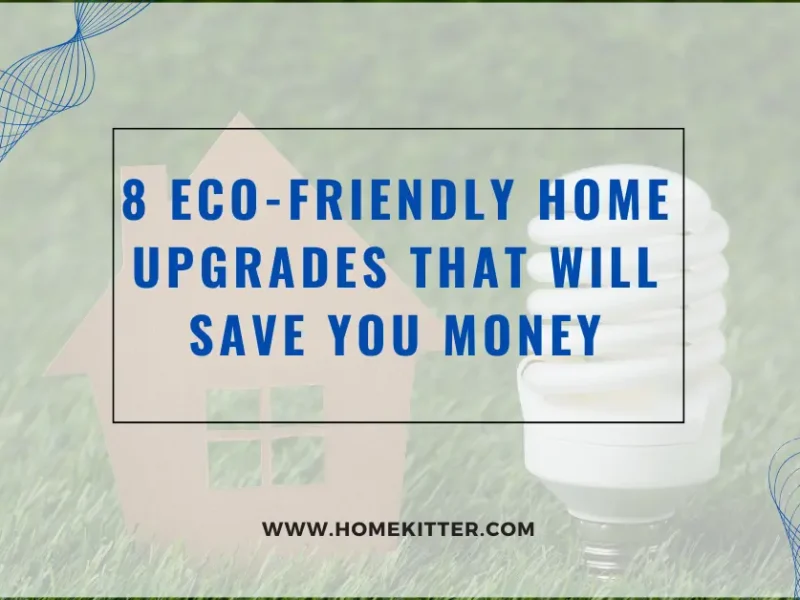Table of Contents
8 Eco-Friendly Home Upgrades That Will Save You Money. Creating a more environmentally friendly home not only helps the planet but also enhances your living space. In this blog post, we’ll explore eight sustainable home design upgrades that add both value and style to your home while minimizing your carbon footprint.
8 Eco-Friendly Home Upgrades
1. Durable Roofing Materials:
Opting for sustainable roofing materials is crucial for a green home. Traditional asphalt shingles contribute to waste and landfill pollution. Instead, consider materials like metal, clay, or concrete tiles, or even living roofs with vegetation.
Metal roofs are durable, energy-efficient, and recyclable, while clay and concrete tiles boast longer lifespans. Living roofs not only insulate but also absorb rainwater, reducing stormwater runoff. Investing in these materials benefits the environment and saves on long-term maintenance costs.
2. Energy-Efficient Appliances:
Upgrading to energy-efficient appliances significantly reduces energy consumption and lowers utility bills. Look for the Energy Star label, indicating compliance with strict energy-efficiency guidelines set by the U.S. Environmental Protection Agency (EPA).
From refrigerators to HVAC systems, these appliances maintain performance while minimizing environmental impact.
3. Solar Panels and Renewable Energy:
Harnessing renewable energy through solar panels reduces reliance on fossil fuels. Photovoltaic systems generate electricity from sunlight, powering lighting, appliances, and electrical needs.
Consider other sources like wind turbines, geothermal systems, and hydroelectric power for a sustainable energy mix, with initial costs offset by long-term savings.
4. Low-Flow Plumbing Fixtures:
Water conservation is integral to eco-friendly design. Install low-flow showerheads, faucets, and toilets to significantly reduce water usage without sacrificing performance.
Look for fixtures labeled with WaterSense, meeting EPA water efficiency criteria, and save money on water bills while preserving this precious resource.
5. Natural Building Materials:
Embrace bamboo, cork, and reclaimed wood for construction to reduce environmental impact. These materials are renewable, biodegradable, and energy-efficient compared to traditional options like concrete and steel. They also bring a unique and stylish aesthetic to your home, suitable for flooring, countertops, and surfaces.
A Home Theater Setup Guide for Homeowners and Tenants
6. Smart Home Technology:
Efficiently manage energy usage with smart home technology. Smart thermostats adapt to your heating and cooling preferences, while automated lighting systems conserve energy by turning off lights when rooms are vacant. Embracing these technologies leads to reduced energy consumption and lower utility costs.
7. Rainwater Harvesting System:
Conserve water and reduce bills by installing a rainwater harvesting system. Collect rainwater from your roof and store it for non-potable uses like irrigation and toilet flushing. By utilizing rainwater instead of municipal water, you save money and decrease reliance on public water supplies.
8. Composting System:
Implementing a composting system transforms organic waste into nutrient-rich soil. Compost food scraps, yard waste, and organic materials to minimize landfill contributions and create a valuable resource for your garden. Composting systems come in various sizes, from countertop models to outdoor bins, helping you save on garbage disposal fees while reducing your carbon footprint.
By incorporating these eco-friendly home upgrades, you not only save money but also contribute to a healthier planet for future generations. Remember, every small step counts toward a more sustainable future!






